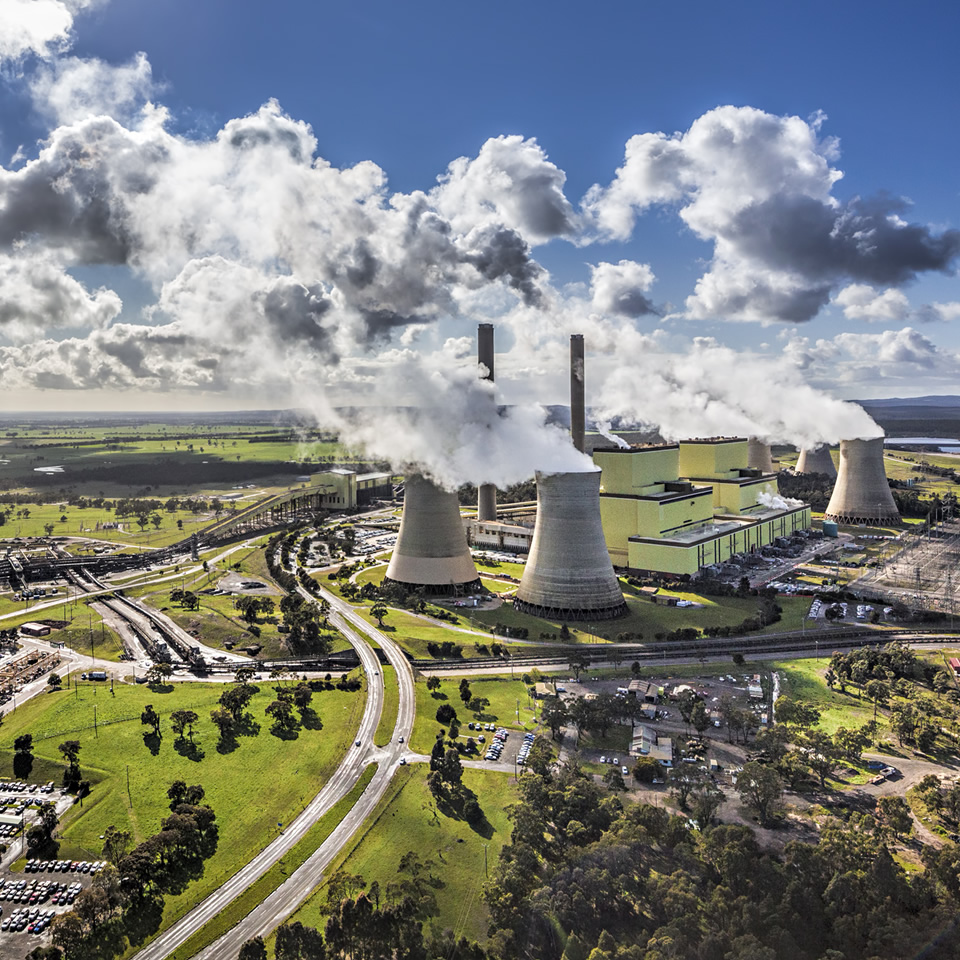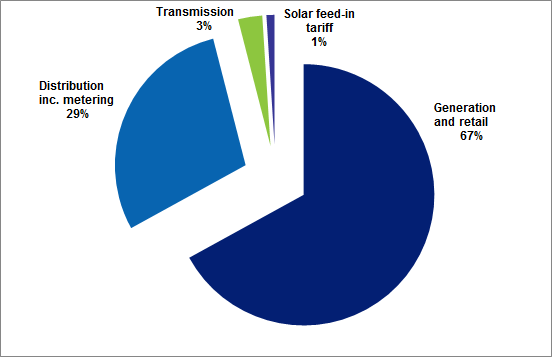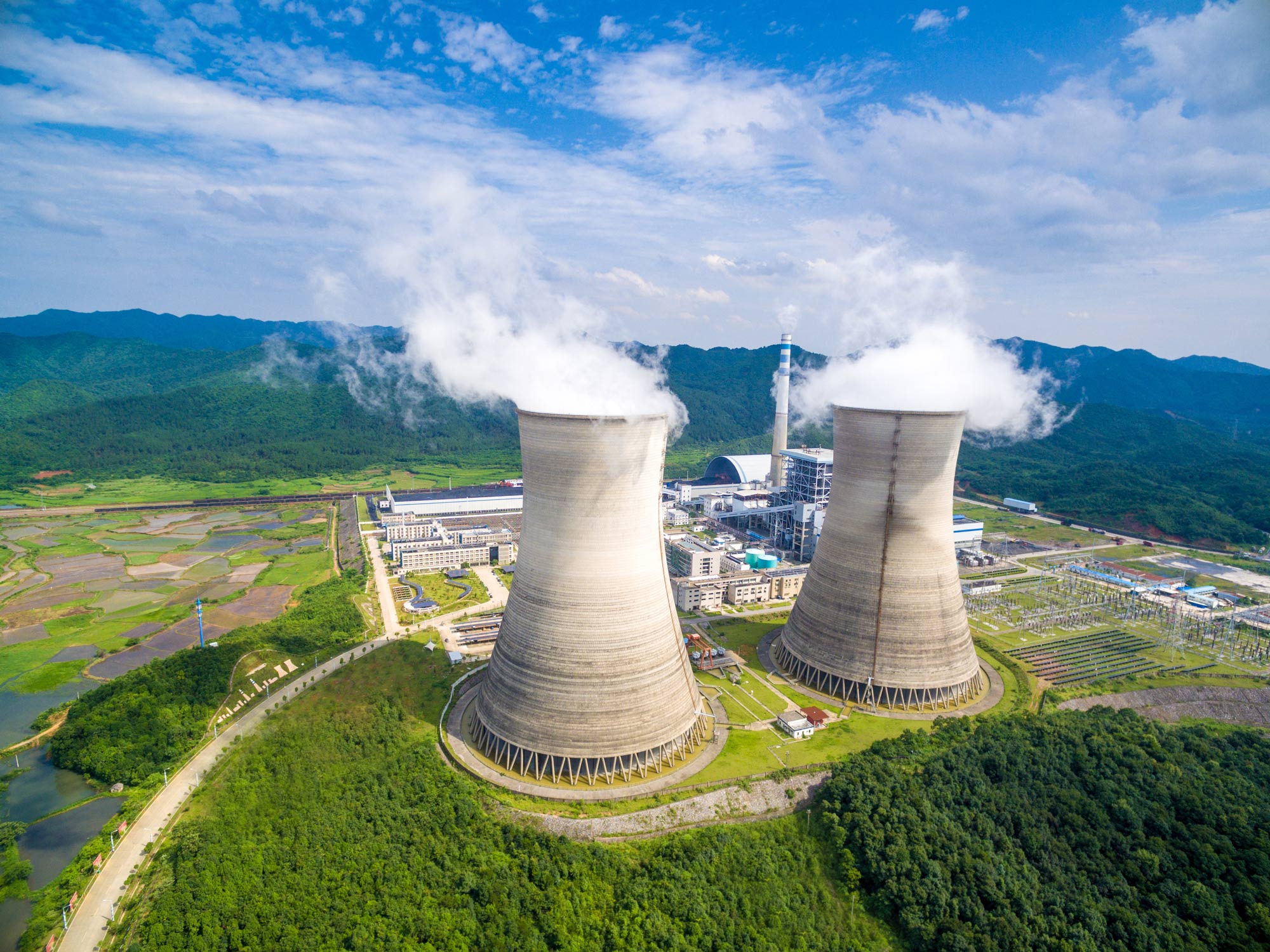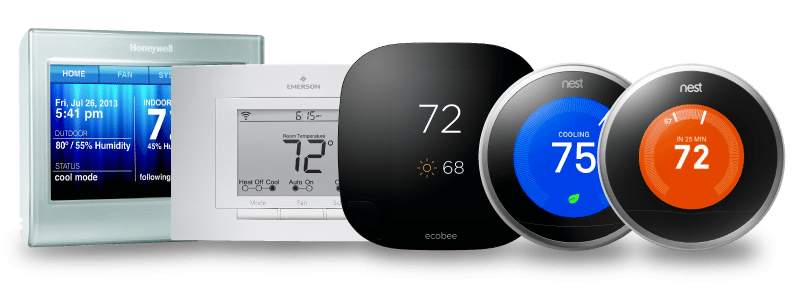The Australian energy industry encompasses all economic activity in relation to the generation, distribution and supply of electricity and gas to end users.
These end users include the vast majority of Australians, who rely on the output of the Australian energy industry every day. The purpose of this article is to provide consumers with some beneficial insights into how the Australian energy industry works.
To that end, we’ll begin with the basics of generating electricity and extracting gas, as well as distribution to homes and businesses. We’ll explain how the energy markets work, and where the money flows, with a note on regulation. This will give the reader a better understanding of how energy prices are set – and, with luck, how to get a better deal!
For the keen eyed, the feature image of above is, in fact, a coal-fired power station located in China. However, coal is the operative word – the Australian energy industry is unfortunately still heavily dependent on it, as will be discussed in the next section.
The Australian energy industry: Where does electricity and gas come from?
Electricity is created in generators, which themselves are typically powered by coal, gas, hydroelectric sources, wind and solar farms. (In rare cases, generators are also powered by biomass.) Using gas to generate electricity can be done in one of three ways: Gas can be combusted to move either a gas turbine, steam turbine, or a reciprocating engine, with the result that these devices output electricity.
Australia-wide, it is estimated we generate a whopping 77% of electricity from burning coal, and just 9% from gas, 8% from hydroelectricity, 5% from wind and 3% from solar.
Using Victoria as a typical example, the primary energy source is brown coal. It has been estimated that this accounts for around 85% of state electricity generation, making Victoria even worse than the Australian average. Victoria’s largest Power Station (by capacity) is Loy Yang, located on the outskirts of Traralgon. Brown coal is supplied from a neighbouring mine.

Loy Yang Power Station is made up of two sections: Loy Yang A has four generating units that collectively supply a little over one third of Victoria’s energy needs. It’s owned by AGL Energy, who also own the Loy Yang coal mine.
Loy Yang B is smaller, it has two generating units that together produce about 17% of the state’s energy. It is currently owned by Alinta Energy, who bought it in 2017 for $1 billion.
So while electricity can be produced by sustainable sources, it is important to understand that Australia is still very dependent on coal. The upshot is, Australia is currently ranked as the 8th highest emitter of greenhouse gases per person in the world! A dubious honour indeed.
In contrast to electricity, which is “created”, Gas is extracted from naturally occurring underground wells. Areas rich in gas are commonly described as “gas fields”.
In Victoria, most of the natural gas comes from the Gippsland Basin and is processed at the Longford processing plant. According to the Victorian State Government, current reserves are set to last another 15 to 30 years. This is quite a wide range, but in reality a fairly short time horizon – at best, about one generation – we need to think ahead to the next generation.
About 55% of the natural gas produced in Victoria is used industrially (for commercial purposes), while 37% is consumed in homes (residential use). In fact, only 8% is used for gas fired power generation.
How does energy reach homes and businesses?
Between generation and consumption of energy, there’s distribution. This is an important element with respect to understanding the Australian energy industry, and makes up a significant component of your utilities bill.
Electricity leaving the Power Station (generator) does so at extra high voltage. (It may be generated at relatively low volts, but is converted to high voltage at the plant to facilitate more efficient transport.)
In high school science, voltage is commonly explained using the analogy of a water tank with a tap at the base. Voltage is analogous to water pressure at the tap. Less water in the tank = lower pressure at the tap. A full tank of water = maximum pressure at the tap.
So extra high voltage is much like extreme water pressure, it needs to be respected.
This electricity is transported via extra high voltage transmission lines – the most visible part of the power grid. Most of these lines are overhead supported by large steel towers, as these are significantly cheaper to construct and maintain (compared to underground lines).
High voltage transmission lines deliver electricity to terminal stations. Here, the voltage level is reduced by a transformer to about 66,000 volts – still a high number! In Victoria, there are 41 terminal stations, which resemble steel forests, complete with metal poles, supporting capacitors, and numerous wires connecting everything. Some of the larger terminal stations span 50 hectares.
The next link in the chain: Electricity is moved between Victoria’s 41 terminal stations and its 235 zone substations by the sub-transmission system.
At the zone substations, the electrical voltage is again reduced, to either 22,000 volts or 11,000 volts. At this lower voltage, electricity can be transported on lighter power poles to distribution substations.
At these distribution substations, electricity is again transformed, this time to 230 volts, ready for supply to homes and businesses. Although, it should be noted that some larger businesses are supplied at much higher voltages.
Of course, it’s also possible for customers with rooftop solar and batteries to supply energy back into the grid.
Distribution of natural gas is similar insomuch as gas, once extracted and processed to remove impurities, is initially transported at high pressure via pipelines to demand zones. Gas pressure is then reduced before it’s distributed to customers.
In Victoria, there are 1,900 kilometers of gas pipes owned by GasNet that make up the “Principal Transmission System” (PTS), supplying Melbourne and central Victoria.
The Australian power grid crosses several state boundaries, to connect Queensland, New South Wales, Vıctoria, South Australia, Tasmania (thanks to the Basslink interconnector) and the Australian Capital Territory. This makes it the longest power grid in the world, end-to-end it measures some 5,000 kilometers.
It also allows electricity to be bought and sold between states, with some $16.6 billion (financial year 2016-17) of electricity being traded annually to supply more than 9 million customers.

How does the energy market work?
Electricity in the interconnected states of QLD, NSW, VIC, SA, TAS and the ACT is sold through the National Electricity Market (NEM). Each state has its own electricity price. (WA and the NT are not connected to the NEM, predominately due to the distance between their networks and the NEM.)
Put simply, the NEM is a wholesale electricity market where generators sell electricity and retailers buy it to on-sell to customers.
The NEM is a spot market. The term “spot market” refers to any financial market where commodities are traded for immediately delivery.
The maths used to calculate the spot price is somewhat complex. Essentially, generators offer to supply the market with electricity at a certain cost, and can re-submit their offer at any time. From there, the Australian Energy Market Operator (AEMO) chooses which generators get to produce electricity, with a preference for the cheapest. (For those interested, a more detailed explanation can be found on Wikipedia.)
If you’re interested in the current spot price in your state, the AEMO provides a data dashboard with this information here.
Perhaps unsurprisingly, the spot price for electricity in each state is prone to constant, and potentially significant fluctuations. To get around this, retailers will normally enter into a contract with generators to fix electricity prices.
As an aside, the NEM system is underpinned by the fact that Large-Scale Energy Storage (which we blogged about recently) does not exist in Australia as yet. So the Australian energy industry is constantly producing all the electricity we require at any given moment – plus some extra in reserve – not very efficient. The big downside of this, is it’s preventing us from transitioning to renewable energy.
Gas is traded a little differently than electricity, with Spot gas markets operating in Melbourne, Sydney, Brisbane, Adelaide and Wallumbilla. Prices can be found on the gas market bulletin board, also overseen by the AEMO.
Where does the money flow?
According to the Australian Electricity Market Operator (AEMO), there are over 300 market generators, transmission network service providers, distribution network service providers and “market customers” (think “energy retailers) participating in the National Electricity Market.
This high level of competition is meant to maintain competitive pricing for consumers.
Money flows from electricity consumers (that is, you and I) to electricity retailers, and then to the AEMO, who pass this on to those companies who own and manage the distribution networks, the transmission networks, and of course, the electricity generators themselves.
Put simply, Transmission Network Service Providers (TNSPs) own and manage the poles and wires that supply homes and small to medium businesses who rely on the Australian energy industry. They also maintain street lights, repair and replace electricity meters and even remove trees in the way of powerlines.
One example of a TNSP was mentioned earlier, AusNet Services. They distribute electricity to NSW and Victoria. They claim that a breakdown of a typical residential customer’s bill works out as follows: Generation and retail costs 67%, distribution and metering 29%, transmission 3% and solar feed-in tariff 1%.

In some cases, the generator and retailer may be the same company. Recall that AGL Energy owns the Loy Yang A Power Station? This makes them a generator, but they are also Australia’s largest electricity retailer, (in 2014 they had some 3.8 million residential and business customers across Australia).
Notwithstanding this vertical integration, AGL must participate in the NEM separately as generator and retailer, in an arm’s length fashion. According to AGL, this diversification creates stability (by spreading risk), and incentivises them to sell electricity at a lower spot price than “generator-only” businesses – because they are both selling electricity and buying it back to sell to customers. So they can’t win on both sides of the equation.
Whether they generate or not, Energy retailers like AGL Energy, Alinta Energy, BlueNRG and Click Energy buy energy wholesale, combine it with transmission and distribution services, and sell the final product to residential and commercial customers.
This gives customers of the NEM freedom of choice of their electricity and gas retailer(s), and freedom to shop around for a better deal.
Customer classifications and energy charges breakdown
The Australian energy industry classified customers in two segments: Small and large.
Which one you fall into depends how much electricity you are using per annum, and the threshold varies state-by-state.
To work out exactly which category you are in, it is helpful to understand how energy is measured. The unit of measurement for electricity is the Watt (W).
When it comes to Watts, here are some handy reference points:
- 1 WATT: Small numbers of Watts can be found on the packaging of common household electrical products – think of a 60W light globe.
- 1,000 WAATS, also known as a Kilowatt (kW): Think of the output of a rooftop solar system, a typical number might be 3.5kW of electricity per hour.
- 1,000,000 WATTS, also known as a Megawatt (MW): Power Station output is often measured in MWs, for example, Loy Yang A Power Station – mentioned above – can output 2,200MW.
- 1000 MILLION WATTS, also knowns as a Gigawatt (GW): The Gigawatt can be useful for measuring the usage of large businesses over the course of a year.
In practice, the consumption of electricity is measured in units per hour. For example, Kilowatts used per hour = kWh.
Customer classification
To be classified as a “large market” customer within the Australian energy industry, also referred to as a Commercial & Industrial (C&I) customer, you need to consume a certain amount of energy per year.
The cut-offs are as follows (use more than this each year, and you’re living large!):
- In South Australia, Victoria & Tasmania: 160+ MWh of consumption Per Annum.
- In New South Wales & Queensland: 100+ MWh of consumption Per Annum.
- In Western Australia: 50+ MWh of consumption Per Annum.
If you use less electricity than this per year, you’re in the “small” market category. This category usually includes both residential and SME (Small to Medium Enterprise) business customers, although it’s common for retailers to differentiate between these two categories when marketing plans.
Energy charges breakdown
For “small” market residential and SME customers, comparing electricity deals is relatively simple, as it only involves three or four variables:
- Peak rate,
- off peak rate,
- daily supply charge, and
- a metering agreement charge (this is optional).
For “large” market C&I customers, things get more complicated, with energy charges broken down into three categories:
- Electricity charges: this is the cost of the energy you actually use, and includes:
- Peak: electricity used during peak times, measured in c/kWh.
- Off peak: electricity used during off peak times, measured in c/kWh.
- Service charges: This is a fixed annual charge levied by your retailer, regardless of the amount of power that is being used. This charge might also include metering costs, if applicable.
- Electricity network charges: This is the cost to maintain the poles and wires and to deliver the power.
- Peak: This a charge for the network component of the peak power used and is measured in c/kWh.
- Off peak: This a charge for the network component for the power used after hours measured in c/kWh.
- Standing charge: This is a fixed annual charge regardless of the amount of power that is being used as charged by the network providers.
- Demand (where applicable): This additional cost may be charged depending on the speed at which a customer uses energy and typically demand is measured in kW or kVA.
- Electricity market charges:
- Market fees: These are charged by the Australian Electricity Market Operator (AEMO):
- AEMO Pool Fees: Charges associated with the participation in the National Electricity Market.
- AEMO Ancillary Charge: A service charge that is used by AEMO to manage the power system safely and securely.
- Environmental charges: These vary by state, but may include:
- LRET: Large-scale Renewable Energy Target. This charge provides a financial incentive for investment in renewable energy power stations.
- SRES: Small-scale Renewable Energy Scheme. This charge provides a financial incentive for investment in small-scale systems such as solar panels and solar water heaters.
- VEET (Victoria only): A Victorian Government initiative that is designed to make energy efficiency improvements more affordable, contribute to the reduction of greenhouse gases, and encourage investment, employment and innovation in industries that supply energy efficiency goods and services.
- ESS (NSW only): This Energy Savings Scheme is established under NSW legislation. Its main objective is to assist households and businesses to reduce electricity consumption and electricity costs.
- Market fees: These are charged by the Australian Electricity Market Operator (AEMO):
When comparing the peak rate of electricity for small versus large contracts, prices look MUCH higher for the small fish, at first blush.
In reality, it’s not an apples for apples comparison, because the peak rate for small market has most other costs built into it, whereas the large market customer will flip to the back of their bill and unfortunately see up to 15 additional charges, as listed above!
The Australian energy industry: A note on regulation
The topic of regulation of the Australian energy industry is a complex topic, and would require an entire article on it’s own – it’s on my list for another day, and when it’s done I’ll link here.
For now, it is worth noting that a framework exists to promote the interest of consumers “with regard to price, quality and reliability of electricity and gas services”.
Energy Consumers Australia have put together a document titled, ‘National Energy Regulation Handbook‘, which provides detailed information for consumers, it can be downloaded for free by clicking the link to its title.
If you would like more advice regarding regulation, or indeed any aspect of the Australian energy industry – including energy procurement – Bulk Energy are here to help.








